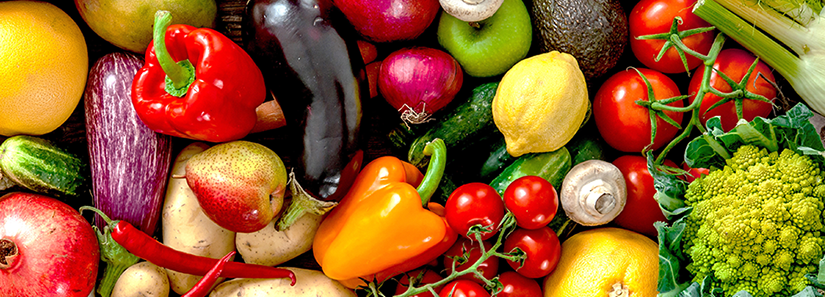
Elizabeth Mitcham, postharvest extension specialist in the UC Davis Department of Plant Sciences and director of the Horticulture Innovation Lab, shared her expertise on fresh produce quality during a segment on ABC News’ Good Morning America today.
If you missed it, you can watch the segment here:
Becky Worley, ABC News technology and consumer correspondent, led the segment, comparing three same-day delivery services by placing simultaneous orders and judging the results.

As a fruit and vegetable expert, Mitcham was invited to assess the quality of the fresh produce after it was delivered. The produce orders included bananas, asparagus, blueberries, bell peppers, romaine lettuce, tomatoes, avocados, cucumbers and grapes.
Mitcham pointed out some squishy bell peppers, damaged bananas, and wilted lettuce, but found the produce was mostly in good condition when it arrived — and gave the deliveries “A” and “B+” grades.
“Overall I’m pretty impressed with this,” she said during the television piece.
For Mitcham, the experience also posed an interesting question about produce delivery services: How will grocery delivery services account for consumer personal preferences related to ripeness? The avocados in these deliveries made this point clear.
“The avocados from the three stores varied widely in ripeness. Avocados from one store arrived mostly ripe, from another store were partly ripe and would be ready to eat in a day or two, but the avocados from the third store would require 3-4 days to ripen on a kitchen counter,” Mitcham said. “In the future, delivery services may consider adding a ‘ripe’ option for products like avocados, but then they would need to package the groceries more carefully.”
How to keep fruits and vegetables fresh and safe at home
Mitcham pointed out that how consumers care for their produce at home, after they’ve purchased it from a grocery store (or delivery service) can make a difference in maintaining produce freshness, quality and taste.
The UC Postharvest Technology Center, where Mitcham’s work focuses on postharvest biology for California agriculture, has a useful flyer for people to stick to their refrigerators. Storing Fresh Fruits and Vegetables for Better Taste (PDF) lists fruits and vegetables based on whether they should be stored in the refrigerator, on the counter, in the pantry, or a combination.
The sheet also includes 9 tips for safe fruit and vegetable handling, including:
- In the grocery cart and at home, keep fruits and vegetables separated from raw meat, poultry, and seafood to prevent cross-contamination.
- Once at home, store all fresh-cut, ready-to-eat, prepared produce in the refrigerator to keep it cold.
- Wash all whole fruits and vegetables, including larger items like melons, just before preparation for eating. Cut out damaged (bruised, discolored) areas before eating.
- Before and after handling fruits and vegetables make sure your work area and utensils are clean and that your hands have been washed with hot soapy water.
- Fruits and vegetables should be washed under running water. Soaking them in water increases the opportunity for cross-contamination and is not recommended.
- Produce such as apples, cucumbers and melons that can be rubbed without
damage should be scrubbed using clean hands or a clean scrub brush. - Dry washed fruits and vegetables with clean disposable paper towels.
- Once cut or prepared, all fruits and vegetables should be refrigerated promptly. After serving, refrigerate leftovers within two hours.
- It is not necessary to wash ready-to-eat, pre-washed and packaged, fresh-cut produce. If you choose to rewash this type of produce, follow the instructions above. Always wash un-packaged, prepared salad mixes under running
water prior to consumption.
What do concerns about quality and freshness of fruits and vegetables have to do with Mitcham’s work with the Horticulture Innovation Lab, where she is focused on food security and nutrition in developing countries? Mitcham is trained as a postharvest biologist, so she studies the lifespan of fruits and vegetables after they are harvested. Fruits and vegetables are highly nutritious foods, but also highly perishable and need to be handled with care after harvest so that they do not become damaged. Improving how fruits and vegetables are handled can reduce food waste and postharvest losses — an important way to improve global food security. More on how reducing food loss and waste can reduce hunger, from the United Nations Food and Agriculture Organization.
More information:
- Storing Fresh Fruits and Vegetables for Better Taste (PDF)
- GMA article: Grocery Wars: Trying out 3 popular same-day delivery services
- Yahoo News: Trying out 3 popular same-day grocery delivery services
- UC Postharvest Technology Center
- How reducing food loss and waste improved global food security, from UN Food and Agriculture Organization
- Information about postharvest projects with the Horticulture Innovation Lab
